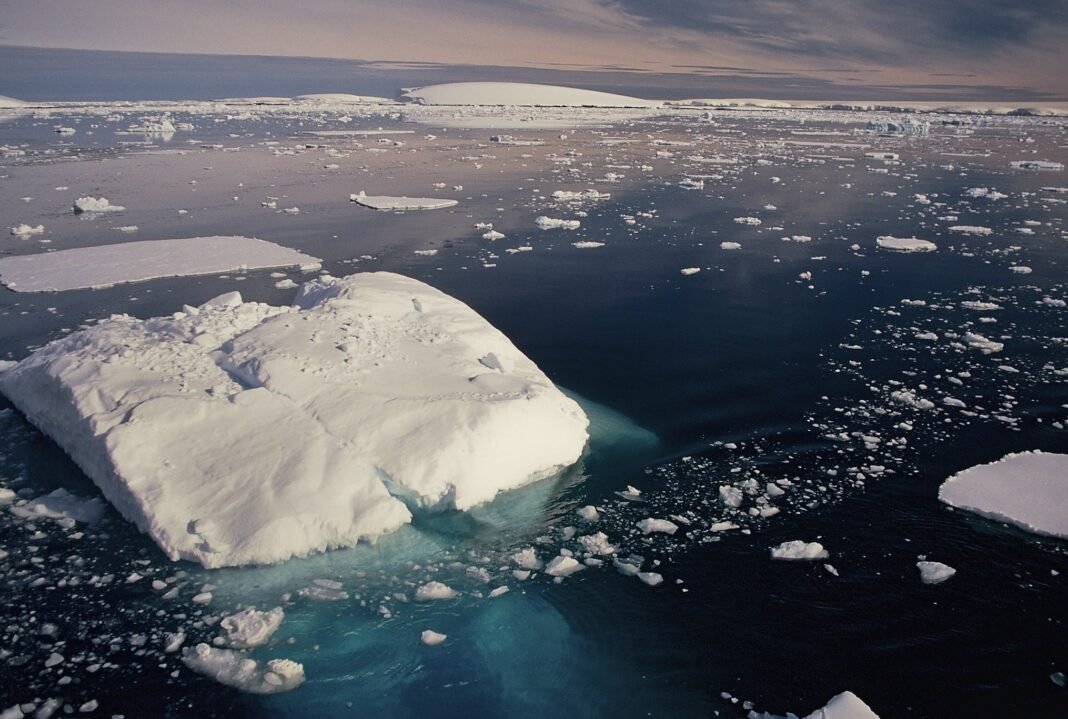
Scientists have uncovered evidence of an ancient river in Antarctica, revealing a vast and remarkably preserved landscape buried under the East Antarctic Ice Sheet for nearly 30 million years.
The discovery, detailed in a study published July 11 in Nature Geoscience, centers on a series of flat, expansive surfaces carved by ancient rivers between 80 million and 34 million years ago.
These landforms, located beneath the ice, offer rare insight into Antarctica’s geological past and may play a critical role in how the ice sheet behaves today and how it may change in the future.
Flat terrain mapped beneath the ice sheet using radar
The research team used radar data from four previous aerial surveys to map the bedrock beneath East Antarctica. What they found surprised them: large, flat plateaus interspersed with deep troughs, stretching across a 2,175-mile (3,500-kilometer) section of the continent’s coastline.
“When we were examining the radar images of the sub-ice topography in this region, these remarkably flat surfaces started to pop out almost everywhere we looked,” said Guy Paxman, a polar geophysicist at Durham University in the U.K. and co-author of the study.
“The flat surfaces we have found have managed to survive relatively intact for over 30 million years.”
Let’s peel away the Antarctica ice, and look at what’s hiding beneath.
The secret sub-glacial lakes, rivers, and more.
Source: Zina Deretsky, NSF, https://t.co/l4xjKY9bKx pic.twitter.com/PhwLnvzeBv
— Cliff Pickover (@pickover) July 15, 2025
Researchers believe the flat terrain was shaped by flowing rivers millions of years before the East Antarctic Ice Sheet formed, when Antarctica had a warmer climate and was not yet locked in ice. The ancient drainage systems likely formed after the breakup of the supercontinent Gondwana, when Antarctica began drifting into its current polar position.
Neil Ross, a geophysicist at Newcastle University and another co-author, described the finding as a long-standing puzzle finally coming together.
This study connects those pieces, showing how these ancient surfaces formed, how they shape today’s ice flow, and how they could influence the future of the East Antarctic Ice Sheet in a warming world.
Ice movement patterns influenced by bedrock structure
The radar data also showed that ice behaves differently depending on the landscape below. Ice above the flat areas moves slowly, while it flows much faster through the deep troughs. Scientists think the troughs may have been carved by meltwater as the ice sheet expanded and adapted to the terrain.
This difference in ice flow could be important. The slow-moving ice above the preserved surfaces may help regulate the rate at which Antarctica loses ice. Understanding these dynamics could refine future predictions of sea level rise.
If the East Antarctic Ice Sheet were to melt completely, it could raise global sea levels by more than 160 feet (50 meters). Researchers say that further studies—including drilling into the bedrock—will be crucial for improving models of ice sheet stability.
This discovery of an ancient hidden river in Antarctica not only unearths a piece of Earth’s deep past but also sharpens the tools scientists use to predict the planet’s changing future.

